‘A river is as healthy as its sickest tributary’
A journey along the river Hindon, the first of the large tributaries of the Yamuna, lead to a unique mound and a small town Barnawa with history written all over it.

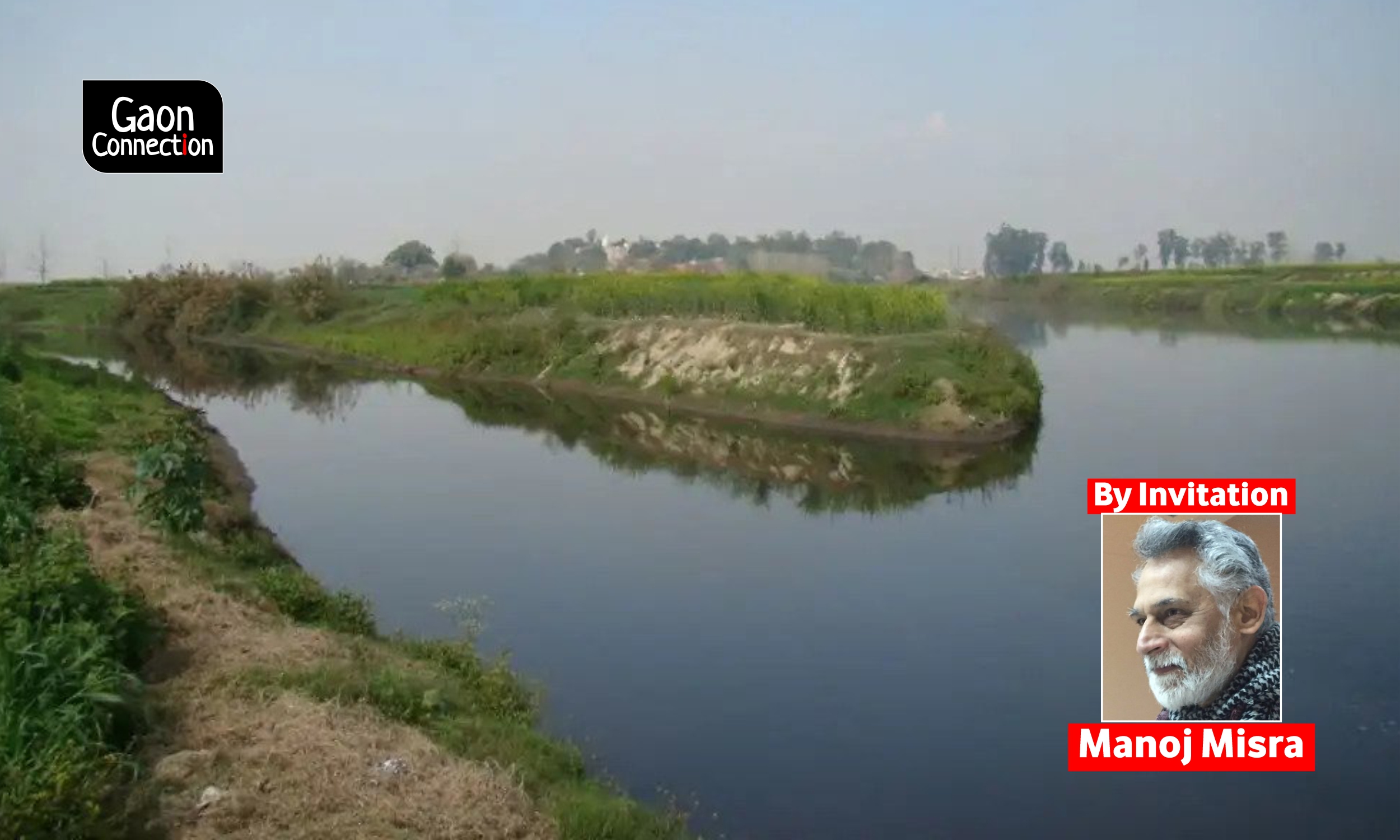
It was conspicuously odd!
We were in the heart of the Ganga-Yamuna doab where, due to millions of years’ old and a few km deep alluvial deposits, the land is remarkably flat. So what was a ‘mound’ doing here? It had to be ‘earthen’ since a rocky outcrop in such deep and old deposits was unlikely.
Intense back-to-back assignments involving the Yamuna River and the people whose lives are integrally linked with it had just ended. One of the key learning from there had been: It’s good to look at the main-stem river but it’s the tributaries – often in far worse shape – which needed equal if not more attention, since a river is as healthy as its sickest tributary!
Bhim and I were investigating the hinterland of Delhi to document the state of the river Hindon, the first of the large tributaries of the Yamuna once the latter has entered the Great Plains cutting through the Shivaliks, the youngest and lowest of the Himalayas.
We were about 50 km north of Delhi and our immediate destination was the confluence point of the Krishni with Hindon. Another founder stream of the Hindon called the Kali West joins it some distance upstream. On the map all of these are Shivalik sutas (daughters of Shivalik) and are aquifer fed.
On a February day, with the monsoon but a memory, we were rather surprised with the volume of water in the river. In a healthier avatar it ought, at this time of the year, to carry but a trickle with welcome pools of clear inviting water, birds and butterflies. But in reality the river was fetid and full.
State of Hindon river
Evidently the upstream industrialised townships of Muzzafarnagar, Kairana and Saharanpur had first sucked the aquifers dry and then disgorged their industrial effluents and sewage into these unsuspecting streams. It was also a comment on the inability of the pollution control bodies to act timely and decisively.
Farmers in the region are of course obliged to irrigate their fields and wash vegetables with what is available in these streams or in the polluted ground water.

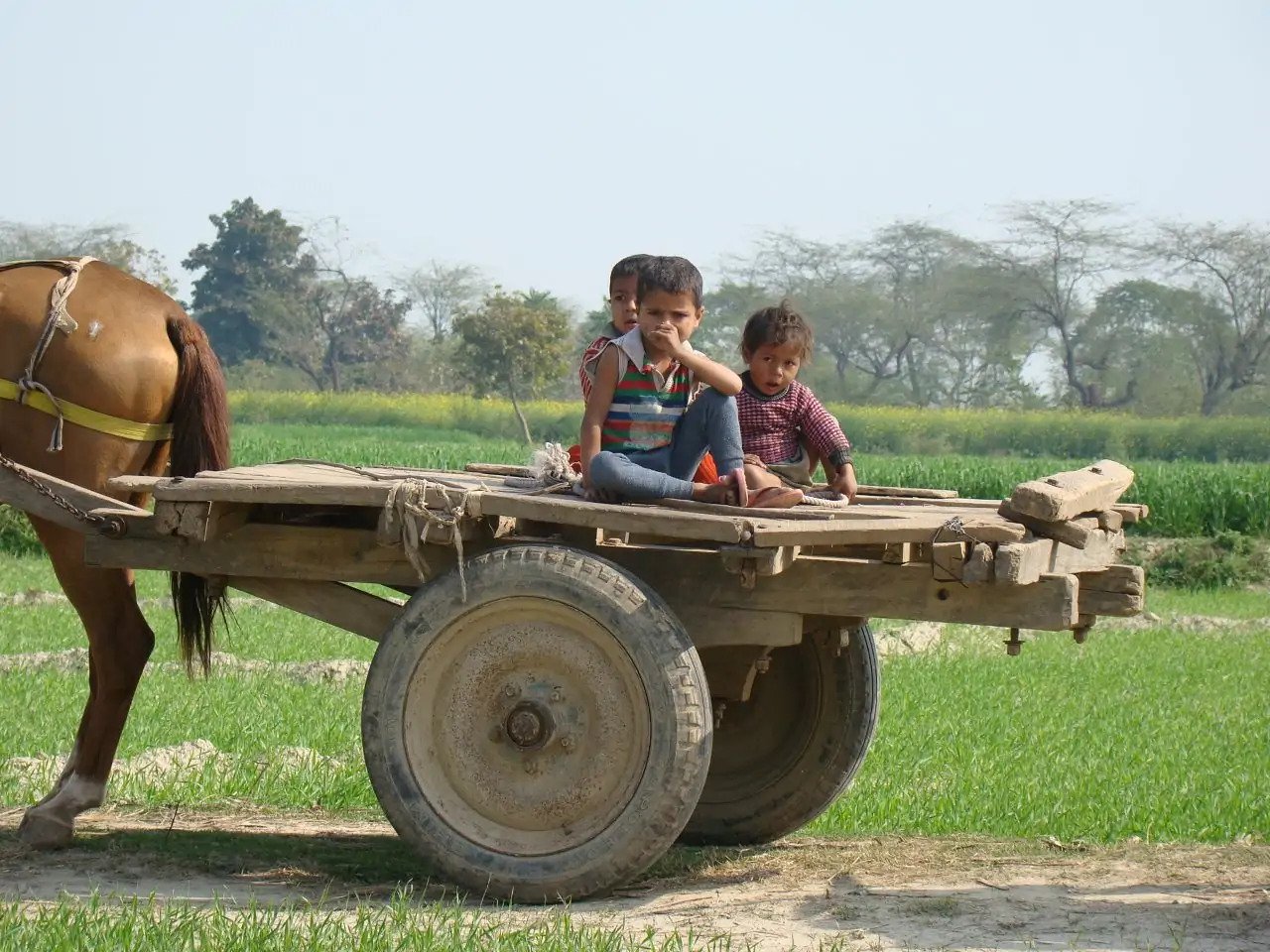
One shudders to think how the crops thus raised must be adversely impacting the health of not only the local people but even the residents of cities like Delhi for whom these lands are catchments of food crops and vegetables.
The mound was distinctly visible from the Krishni-Hindon sangam (confluence point). Closer approach revealed structures atop it. Local people informed us that it lay at the southern edge of a small town called Barnawa and had history written all over it. They claimed it was the site of the Mahabharat era ‘infamous’ Lakshyagrah where the Kauravas had deceitfully though in vain tried to burn down the Pandavas within a palace built of Lakshya (Lacquer).
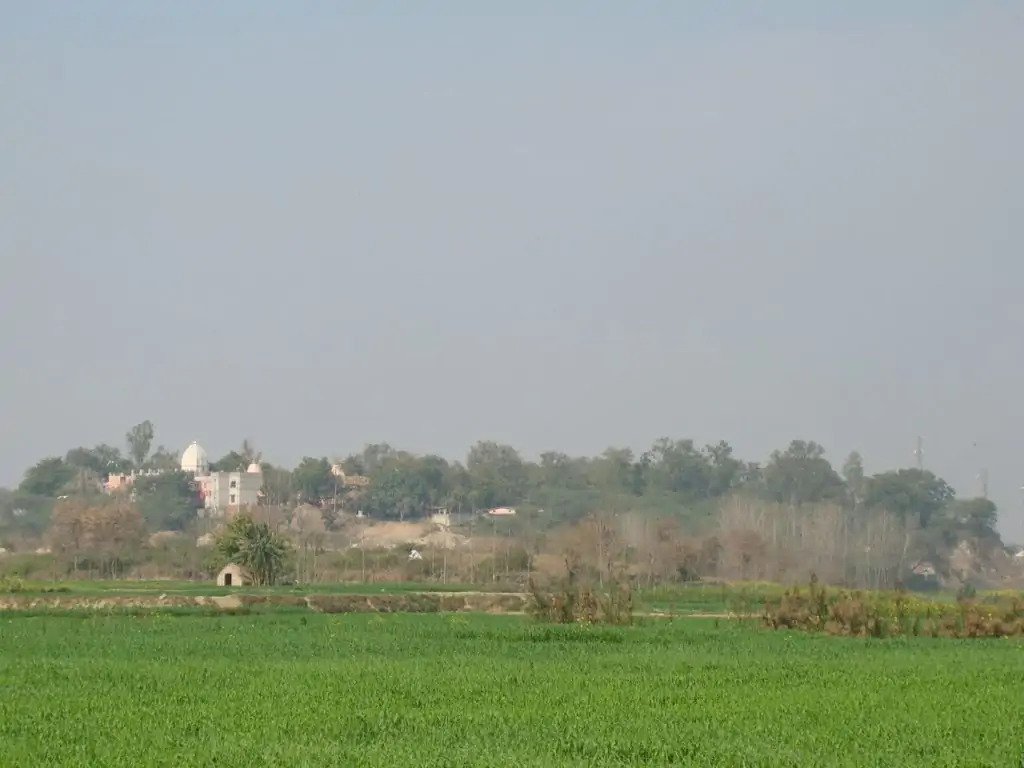
The name Barnawa is a corrupt form of Varnavrat a forest that finds a mention in the epic. Soon we were led to the two caves that had famously been used by the Pandavas to escape the palace in flames.
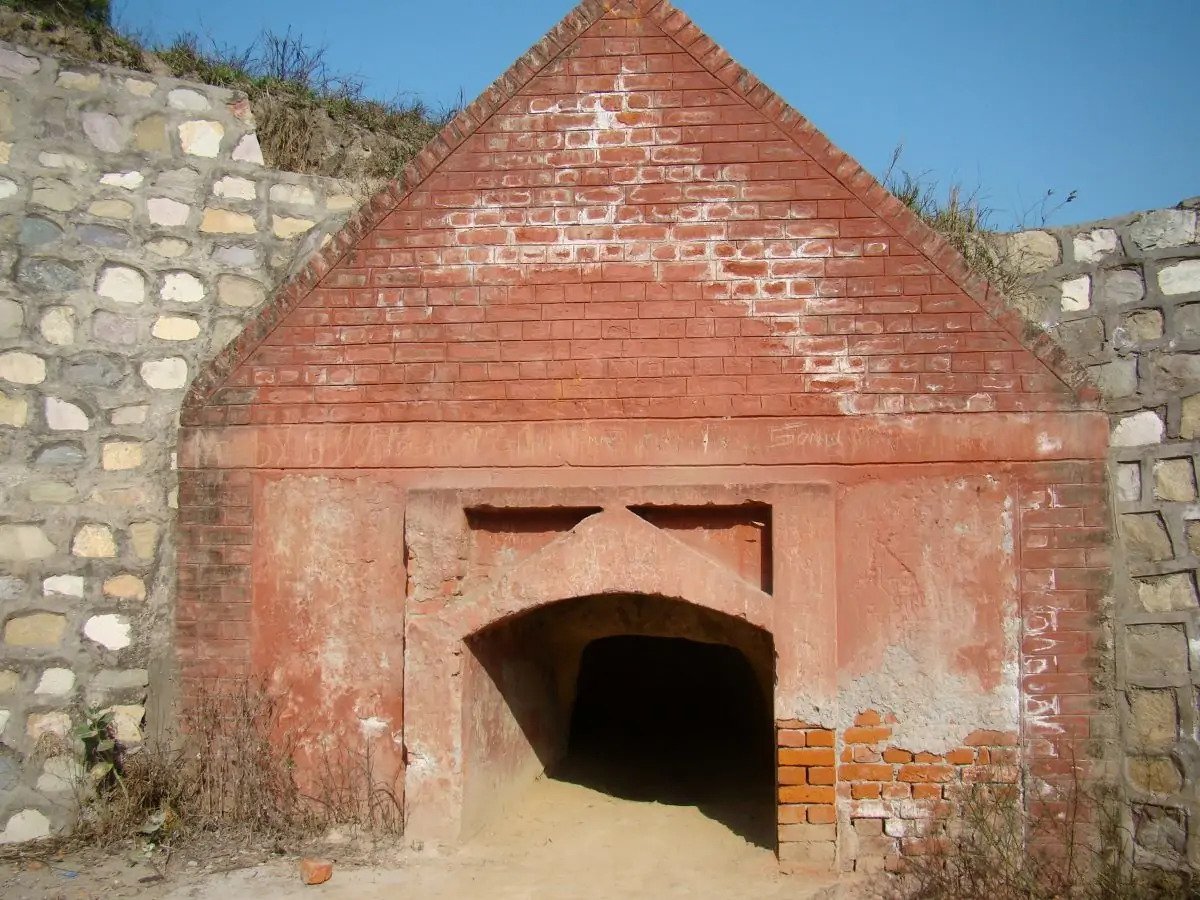
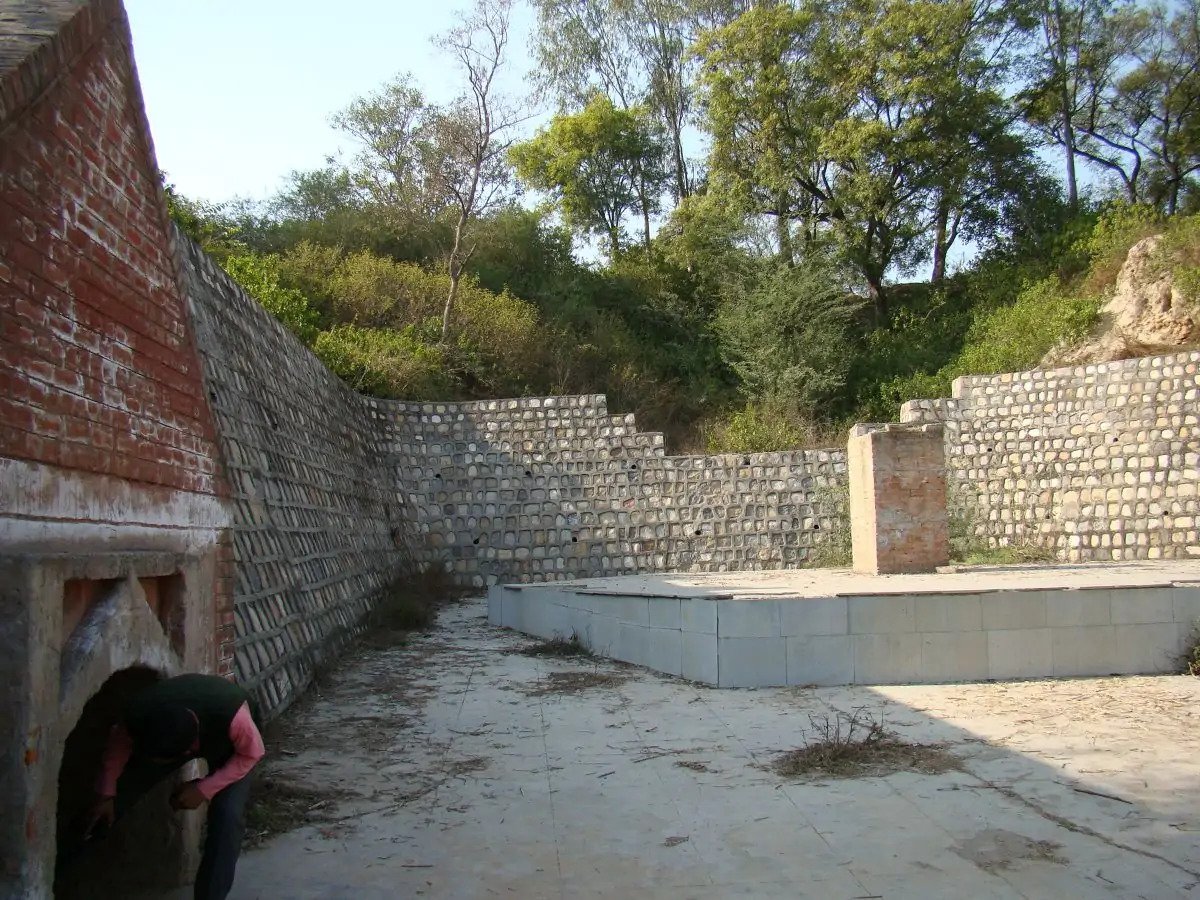
The 60 ft high mound was indeed earthen. While a board (without any official seal) loudly claimed its epic authenticity, buttressed by its geographical closeness to the district town of Baghpat (one of the five villages sought by the Pandavas from Duryodhan, their cousin and Kaurava king) and Indraprastha (present day Delhi) the capital city of Pandavas, it cannot be discounted that there are a few other sites (one near Allahabad and another called Lakhamandal in Uttarakhand) that claim the same (dis)honour.
Whatever be the case, there were telling signs of much older construction hidden underneath the mound.

Interestingly, our share of surprises was still incomplete. On top of the mound we found a Sanskrit Mahavidyalaya (Sanskrit College) established by one Krishnadutt Maharaj ji.
An incredible story (as narrated by a teacher at the College) goes that a child with unusual characteristics was born in 1942 in a village called Khurampur Salemabad, now in the Ghaziabad district of UP. Within months of his birth whenever in a prone position (on his back) he would turn his head from side to side and recite something indistinctly. As he grew older his condition did not improve and his parents suspected that he was under the influence of some evil spirits. Local medicine men tried their best (including physical torture) to rid him of the disease or evil influence, but in vain.

With age his utterances (when in a trance) became coherent and he began to speak in the Sanskrit of yore. His friends started to amuse themselves at his cost and his reputation as a ‘curiosity’ spread. Ultimately when he was fifteen, unlettered, and out of disgust at his condition which made him often an object of derision, he left his home and village, landing by sheer chance at the Barnawa mound. Here his value as a preacher was recognized. Linguistic experts claimed that when in trance he was speaking as if he were the famous Brahmarishi Shringi of Ramayan fame. He often spoke of rishis of that era as of a friend or acquaintance.
Now known as Krishnadutt Maharaj ji, in 1965 he established a trust and started, atop the mound, a Sanskrit school, which has today grown into a college. He was invited to lecture all over the country and his followers converted his discourses into books. Once he was even poisoned by people who suspected him to be a fake. He passed away in 1992 at the age of 50. (NB: More on him could be found at https://shringirishi.in/ and several other postings including videos on the net).
What is remarkable in all this is the fact that this ‘mound’ has vestiges of Treta-yug (Ramayan and Lord Rama) thanks to Maharaj ji and his occasional bouts of Brahma-rishihood, of Dwapar-yug in Lakshyagrah (Mahabharat and Lord Krishna) and, of course, of Kali-yug (the age of machines and the awaited Lord Kalki) because ofthe rampant pollution of the Hindon and its tributaries.
Manoj Misra is a former forest officer and the convener of the ‘Yamuna Jiye Abhiyaan’ (Living Yamuna Campaign), a civil society consortium. Views are personal.

